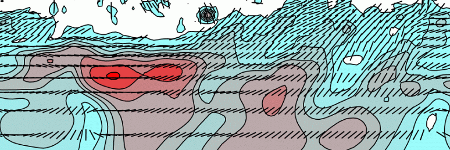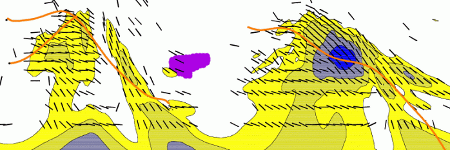Phase Diagram

- The galaxy has an azimuthally oriented highly polarized region between azimuths 70 and 150 degrees.
- The magnetic field is nearly azimuthal there with some localized jumps.
- The radial disk scale length is considerably smaller than on the opposite disk side (a pushed-in disk?).
- Between azimuths 240-330 deg. the opposite is true: the disk is more extended and the B-vectors are inclined by some 40-60 deg.

- The western spiral arm (azimuths 250-330 degs) apparently pushed-in at azimuth of about 270 deg. This is accompanied by a bright polarization spot and some decrease of the pitch angle.
- The eastern magnetic spiral arm (azimuths 100-150 deg.), is thought to be "anomalous" as it crosses the optical dust lane. Nevertheless, in contrast to the western arm, the eastern one keeps a constant pitch angle of both the polarization distribution and magnetic pitch angle along its whole length. This phenomenon is currently under an intense investigation.
The purple spot at azimuths 150 - 180 deg. is the region of peculiar HI and CO velocities discussed by Zhang et al. 1993.
